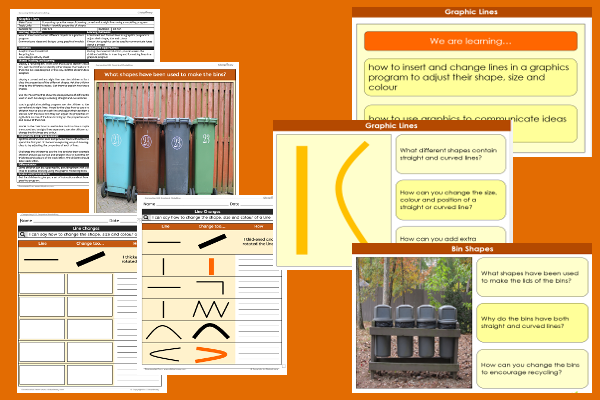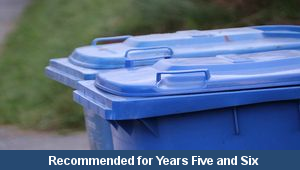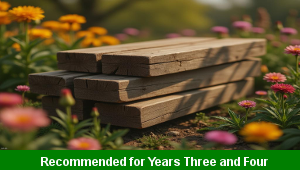Lesson Two – Graphic Lines

This computing teaching pack for Key Stage Two gets the children to practise different ways of drawing curved and straight lines to represent a range of specific shapes when using a graphic modelling program.
The class can explain and model how to alter the shape, width and style of different lines that might have been used in a graphical model of a recycling bin.
Download this teaching pack including a lesson plan, classroom activities and an interactive presentation to practise different ways of drawing curved and straight lines to represent a range of specific shapes when using a graphic modelling program
Activities in this teaching pack include display posters to identify and describe some of the shapes and lines used in different objects and differentiated templates to select and record some of the changes that can be made to different lines in a graphics program.
The interactive presentation can be used to explore different ways of drawing curved and straight lines to represent shapes using a graphic modelling program.
This lesson is part of a computing scheme of work to get the children to select, format and adjust the properties of different shapes when creating the graphic design for a recycling bin for use in school classrooms. There are teaching activities for shared learning, differentiated worksheets to support independent learning and interactive presentations to introduce concepts and key skills.
-

Future World
Practise using apostrophes correctly in matching sentences to describe some of the things that might be owned by families in the future
-

Recycling Bin
Select, format and adjust the properties of different shapes when creating the graphic design for a recycling bin for use in school classrooms
-

Space Helmets
Select, shape and combine different mouldable materials to make a model of an astronaut’s helmet that could be worn when exploring space
-

Division Remainders
Explain and model how to solve contextual and abstract problems when dividing two and three digit numbers by single digit numbers with remainders
